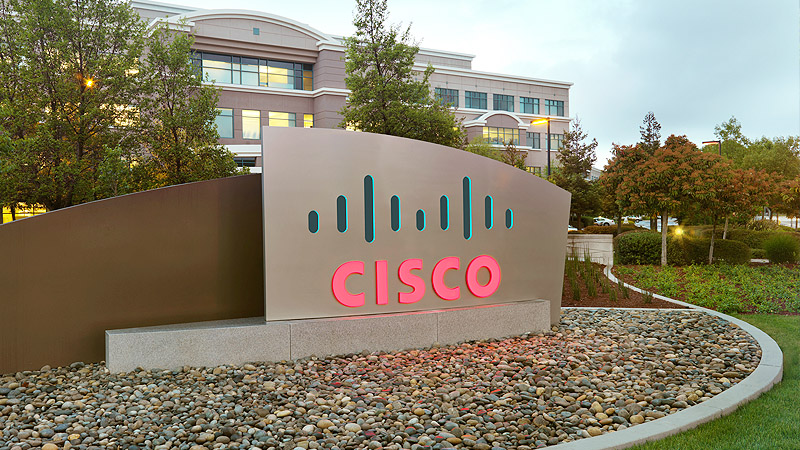LAS VEGAS, NV—Interop—April 2, 2014—Building on its vision of Application Centric Infrastructure (ACI) in the data center, Cisco and industry leaders today continued the transformation of information technology (IT) with the adoption of a new open, standards-based protocol called OpFlex. Through OpFlex, Cisco ACI continues to deliver the standards-based building blocks for next-generation networks while accelerating innovation with multiple industry leaders. Cisco customers such as Sungard Availability Services, du, Acxiom and Telstra are rapidly adopting the new Nexus 9000 switching platform for their transition to 40Gigabit Ethernet speeds and embracing ACI as the new model for automating data center infrastructure to support critical business applications.
For example, Acxiom, an enterprise data, analytics and software-as-a-service company that uniquely fuses trust, experience and scale to fuel data-driven results, is adopting the new Nexus switches and ACI. “Every week, Acxiom powers millions of transactions on behalf of our global clients, and we need a powerful 40GbE data center with optimal performance and scalability,” said Chuck Crane, Network and Security Architect Acxiom. “Cisco is a trusted, knowledgeable partner, and with Cisco Application Centric Infrastructure (ACI), we know we have an open, future-proof data center architecture that can continue to grow as we enhance client services. Cisco’s 9500 switching platform; Cisco Application Policy Infrastructure Controller (APIC) for centralized management; and the OpFlex southbound protocol, all combine to offer the most compelling high performance, scalable data center solution on the market today.”
ACI is the first data center and cloud solution to offer full visibility and integrated management of both physical and virtual networked IT resources, accelerating application deployment through a dynamic, application-aware network policy model. ACI’s policy-based approach will be extended to a growing vendor ecosystem, allowing customers to leverage application-aware policies across multiple hypervisors, physical switches, and network services to protect their existing data center investments.
Co-authored by Citrix, IBM, Microsoft, and Sungard Availability Services, OpFlex provides a unique mechanism that enables a network controller to transfer abstract policy to a set of “smart” devices capable of directly rendering rich network policy on the device. Through Cisco’s Application Policy Infrastructure Controller (APIC) and OpFlex, customers will be able to deploy and manage applications at scale, with full policy enforcement in multi-data center environment via policy federation.
As a long-standing participant in the open source community, Cisco is driving the growth of open source technologies, expanding the development of open standards, and investing resources to provide sustainable innovation. Along with its co-authors, Cisco plans to help standardize OpFlex through the IETF and provide open source implementations to accelerate support within the broader ecosystem, including such widely adopted open source-based solutions as OpenStack.
Customers understand that Cisco ACI and OpFlex solve pressing problems in their data centers today. To drive business agility and efficient use of resources, IT administrators must be able to deploy applications rapidly across a broad range of infrastructure while still delivering performance, scalability, security, and visibility across physical and virtual infrastructure.
Cisco has now opened its APIC application policy to a variety of infrastructure providers through the new OpFlex protocol, which will allow customers to simplify the automation and management of multi-vendor networks. OpFlex will enable leading hypervisors, switches and network services (layer 4-layer 7) to self-configure driven by application policy. Industry partners adopting the OpFlex technology include leading hypervisor and software vendors such as Canonical, Citrix, Microsoft, and Red Hat which will jointly support OpFlex-enabled virtual switches and extend the Cisco ACI policy framework in their virtual environments. Network services vendors like Avi Networks, Citrix, Embrane, and F5 Networks will be shipping an OpFlex agent with their appliances.
In addition, Cisco is working with OpenDaylight, the leading open source SDN controller in the industry to create a 100 percent open source, ACI-compatible policy model and OpFlex reference architecture. The OpenDaylight membership represents 60 percent of data center capital expenditures worldwide and includes a broad cross section of industry leaders and the policy project includes contributors from IBM, Midokura and Plexxi.
Announcement Facts
Cisco’s OpFlex has major industry support and is undergoing standardization processes:
- Cisco is proposing industry standardization of OpFlex with the IETF.
- Canonical, Citrix, Microsoft, and Red Hat plan to support OpFlex and enable ACI policy support through a hypervisor switch.
- Network services vendors such as Avi Networks, Citrix, Embrane, and F5 Networks plan to support OpFlex in appliances.
- Open Daylight, the leading open source SDN controller, will offer an ACI-compatible policy model in its upcoming Helium release. Cisco, IBM, Midokura, and Plexxi will all contribute to this release and OpenDaylight is structured to help ensure an open approach and transparency to Cisco’s policy based technology.
Cisco is planning to support the OpFlex Protocol on the following Cisco products:
- Cisco Application Centric Infrastructure, Nexus 9000 Series
- Cisco Nexus 1000V
- Cisco ASR 9000 Series
- Cisco Nexus 7000 Series
- Cisco ASA
- Cisco SourceFire
Customers Comment on Cisco 9000 Switches and ACI
du is a leading integrated telecommunications service provider in the United Arab Emirates and the fastest growing operator in the Middle East. du is consolidating several data facilities into two next generation data centers designed to host new cloud services using Cisco Nexus 9000 switches and ACI. “We are committed to building our infrastructure on open standards: the Cisco APIC southbound protocol, OpFlex, provides us an open, extensible framework to support any device in our data center—hypervisor switches, physical switches, network services and servers—allowing us to take advantage of our existing infrastructure investments,” said Saleem Al Balooshi, Executive Vice President - Network Development & Operations, du. Cisco Advanced Services will support du with design, deployment, services migration, and project management.
Sungard Availability Services
“We are interested in the Cisco ACI solution because it manages both physical fabrics and virtual networks, works with third party devices, and will integrate with CloudStack—the Sungard Availability Services cloud orchestration system; in short, we are interested in its potential to provision and manage our customers' network resources across the entire cloud data center,” said Dave Gilpin, SVP of Global Cloud Solutions, Sungard Availability Services. “We also believe Cisco’s open standards-based approach with the ACI OpFlex protocol makes ACI even stronger. We recently conducted testing on ACI in which it fully delivered everything we expected, and proved to already be quite stable and mature.”
Telstra
“Opflex demonstrates Cisco's commitment to an open, application centric approach to cloud services. This will help enable Telstra to deliver the service agility, security and performance that our customers expect from an enterprise grade cloud. We're excited to be developing an intelligent network-enabled cloud with Cisco,” said Erez Yarkoni, Executive Director Cloud, Global Enterprise and Services, Telstra, speaking of the partnership and the opportunities that OpFlex presents for Telstra customers.
Millennial Media is the leading independent mobile advertising platform company. “Our mobile advertising infrastructure must perform flawlessly to meet our clients’ needs, as we deliver billions of ads per day across a number of mobile devices and screens. Because of the service levels we require, we are moving to a massively scalable data center that offers optimal 40GbE performance,” said Bob Hammond, CTO, Millennial Media. “It’s critical that we are able to deliver hundreds of thousands of transactions per second, so latency and 40G throughput is a number one concern. After evaluating numerous vendor solutions, Cisco's Nexus 9000 switching platform provided us with the best performance to support our evolving data centers, while protecting existing IT investments."
Cyber Agent Inc
“Cisco OpFlex allows ACI to more tightly integrate with Open vSwitch, which makes it much easier for us to benefit from ACI and its policy model in our Openstack deployment,” said Teppei Takahashi, Senior Network Engineer, architecture development group Ameba Division, Cyber Agent Inc. “We are very excited about opFlex, and looking forward to take this journey with Cisco and the community.”
Manteca Unified School District
“We selected the Cisco Nexus 9000 switch because it allows us to deploy 10G and 40G scalable infrastructure with confidence and provides a future-proofed investment for SDN and Application Centric Infrastructure adoption going forward,” said Colby Clark, Director of Information Technology, Manteca Unified School District. “Cisco’s leading innovations provide an ideal platform to transform our data center built on open standards, allowing us to respond to our educational end user demands for emerging technology services, bring-your-own device, and educational applications in the classroom.”
Partner Executive Videos & Blogs
Watch Video: Paul Cormier, president, Products and Technologies, Red Hat
Raising the Bar in Open Source Capabilities: Cisco and Red Hat
Tim Burke, vice president, Virtualization and Cloud Development, Red Hat
Watch Video: Brad Anderson, corporate vice president, Windows Server & System Center, Microsoft
Microsoft and Cisco’s Application Centric Infrastructure, hello cloud!
Satya Nadella, chief executive officer, Microsoft
F5 and Cisco: Operationalizing the Network
Lori MacVittie, senior product manager, Emerging Technologies, F5 Networks
Watch Video: Sangeeta Anand, senior vice president, Product Management and Product Marketing, F5 Networks
Great News for Networkers: Embrane’s 2014 Is Off to a Great Start!
Dante Malagrinò, president & CEO at Embrane
Towards Standards-based Automation
Abhishek Chauhan, vice president and chief technology officer, Cloud Networking Product Group, Citrix
Watch Video: Abhishek Chauhan, vice president and chief technology officer, Cloud Networking Product Group, Citrix
Cisco and Canonical: Application-Driven Cloud and Datacenter Collaboration
John Zannos, vice president, Cloud Channels and Alliances, Canonical
Cisco Application Centric Infrastructure
Cisco Application Centric Infrastructure (ACI) leverages a unique approach to network programmability and management. It uses a centralized, Application Policy Infrastructure Controller (APIC) to automate and manage physical and virtual data center fabrics. Unlike older SDN controllers, it supplies application policy—not configuration—to network devices, allowing them to self-configure. Its policy focus makes APIC much more extensible to all network devices and simplifies integration of new infrastructure with a customer’s preferred management, automation and cloud orchestration systems, for coordinated, comprehensive automation of the entire infrastructure. It also allows the ACI infrastructure to achieve a level of scale and resiliency unattainable by existing SDN solutions.
Components of the Cisco Application Centric Infrastructure include:
- The Nexus 9000 switch portfolio running optimized NX-OS.
- The Application Policy Infrastructure Controller (APIC), the unified point of automation and management for the ACI fabric, policy programming, and health monitoring, supporting any application anywhere.
- Application Network Profiles, which define the requirements of an application and its interdependencies on the underlying infrastructure. The APIC uses these profiles to dynamically provision networking, services, compute storage and security policies, no matter where the application is or how it changes.
Additional Resources
Learn more about Cisco Application Centric Infrastructure (ACI)
Learn more about Cisco’s Open Source Efforts
Watch webcast: New Applications Are Knocking: Is your Data Center OPEN for Business?
Learn more about Cisco data center solutions
Read: Cisco Data Center blog
About Cisco
Cisco (NASDAQ: CSCO) is the worldwide leader in IT that helps companies seize the opportunities of tomorrow by proving that amazing things can happen when you connect the previously unconnected. For ongoing news, please go to http://thenetwork.cisco.com.
# # #
Cisco and the Cisco logo are trademarks or registered trademarks of Cisco and/or its affiliates in the U.S. and other countries. A listing of Cisco's trademarks can be found at www.cisco.com/go/trademarks. Third-party trademarks mentioned are the property of their respective owners. The use of the word partner does not imply a partnership relationship between Cisco and any other company.
Availability Disclaimer: Many of the products and features described herein remain in varying stages of development and will be offered on a when-and-if-available basis. This products and features are subject to change at the sole discretion of Cisco, and Cisco will have no liability for delay in the delivery or failure to deliver any of the products or features set forth in this document.
Forward-Looking Statements
This release may be deemed to contain forward-looking statements, which are subject to the safe harbor provisions of the Private Securities Litigation Reform Act of 1995. These statements include, among others, statements regarding Cisco’s delivery of Application Centric Infrastructure, new professional services and an open partner ecosystem and the expected benefits for customers, Cisco’s expansion of its Nexus switching portfolio, and Cisco’s intention to acquire the remaining interest in Insieme Networks. Readers are cautioned that these forward-looking statements are only predictions and may differ materially from actual future events or results due to a variety of factors, including, among other things, the ability of Cisco to successfully introduce and to achieve the expected benefits of its application centric infrastructure and related services and partner ecosystem, the potential impact on the business of Insieme Networks due to the uncertainty about the acquisition, the retention of employees of Insieme Networks, the ability of Cisco to successfully integrate Insieme Networks and to achieve expected benefits, business and economic conditions and growth trends in the networking industry, customer markets and various geographic regions, global economic conditions and uncertainties in the geopolitical environment, overall information technology spending, the growth and evolution of the Internet and levels of capital spending on Internet-based systems, dependence on the introduction and market acceptance of new product offerings and standards; increased competition in Cisco’s product and service markets, including the data center, and other risk factors set forth in Cisco's most recent reports on Form 10-K filed on September 10, 2013. Any forward-looking statements in this release are based on limited information currently available to Cisco, which is subject to change, and Cisco will not necessarily update the information.
References







